





Cooking Sections
Wallowland
Site-specific installation
2023 - ongoing
Location and Visiting Hours: EK BİÇ YE İÇ Kurtuluş; Thursday-Friday-Saturday, 12:00-18:00
Inspired by local Muhallebici (milk pudding shops), this site-specific installation features Cooking Sections’ multi-year collaboration with herders, producers, biologists, environmentalists, conservationists, and ethnomusicologists. Following water Buffalo and their metabolic interaction with multiple species in the encroached wetlands outside Istanbul throughout different times of the year, visitors can taste (and listen to) some of Turkey’s best known Buffalo milk dishes. In parallel, the Manda Festivali, a new Buffalo festival in Arnavutköy, is celebrated every autumn since 2022 to highlight the presence and permanence of both water Buffalo and herders in Istanbul, while preserving the historic food heritage of such practices.
With contributions by Mustafa Avcı, Melisa Bal, Akgün İlhan, Itri Levent Erkol, Anadolu Meraları, and Burçin Çıngay
Commissioned by 17th Istanbul Biennial
Developed in collaboration with CLIMAVORE x Jameel at the RCA and EK BİÇ YE İÇ
For more information: climavore.org
Source (photos): www.iksvphoto.com
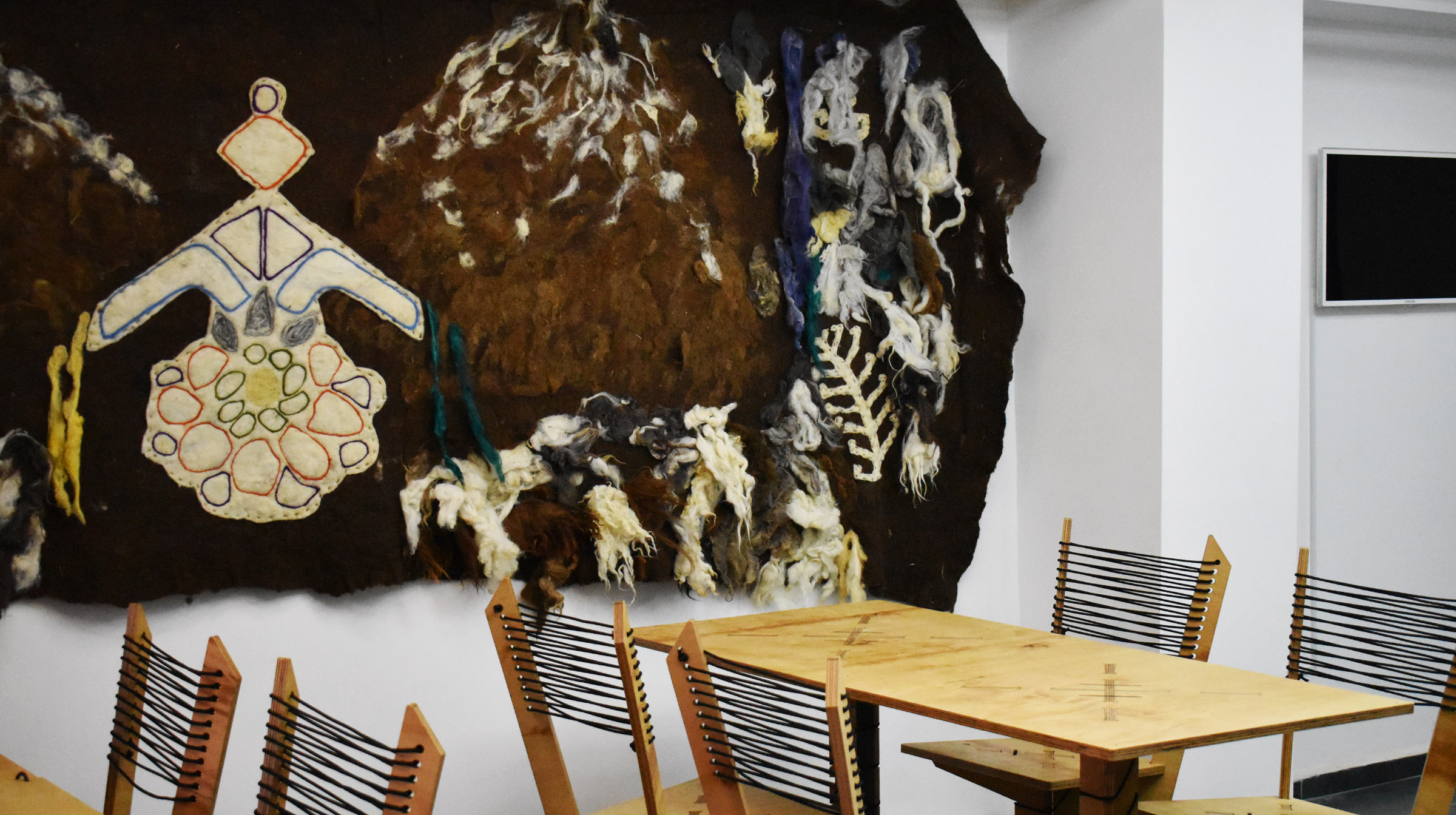
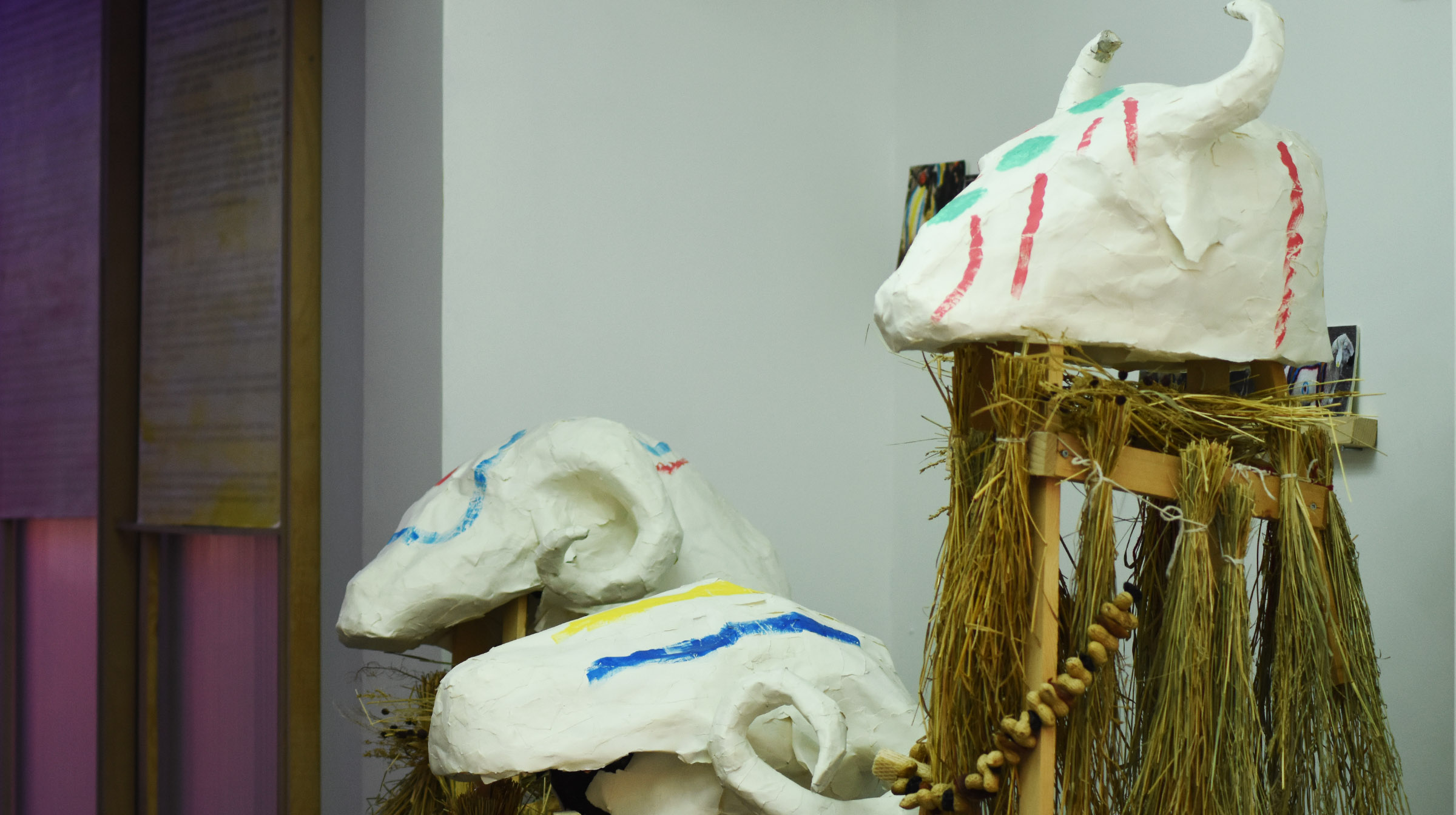
Fernando García-Dory
Boğatepe village and INLAND
Site-specific installation
15.01.2023 – 15.05.2023
Location: EK BİÇ YE İÇ Taksim
Initiated by Fernando García-Dory in 2009 as part of his collaborative agro-ecological projects, actions and cooperatives, INLAND explores the manifold dimensions of the culture-nature relationship. Through engagements with landscape, identity and utopia, INLAND connects agro-ecology, territory and social change, developing alternative economic models and production systems, conceiving new ruralities.
For Istanbul, INLAND resumes the research initiated for the 14th Istanbul Biennial in 2015 about land management systems, pastoralism and cheese-making in the Kars region of Eastern Anatolia. The new iteration sees parallel activities taking place in Boğatepe village in Kars and in Istanbul. In Boğatepe, with its 200 inhabitants and proximity to high pastures and dairy traditions, experimental modes of community development and economy are being tested, partly inspired by the utopian Village Institutes movement of the 1930s. An installation connects different materials and proposals from the village, reflecting the community’s self-organisation and the rhizomatic constellation of relations between neighbours, grasslands, animals and their grazing routes, land governance, cheeses, and their biochemical and fungal associates.
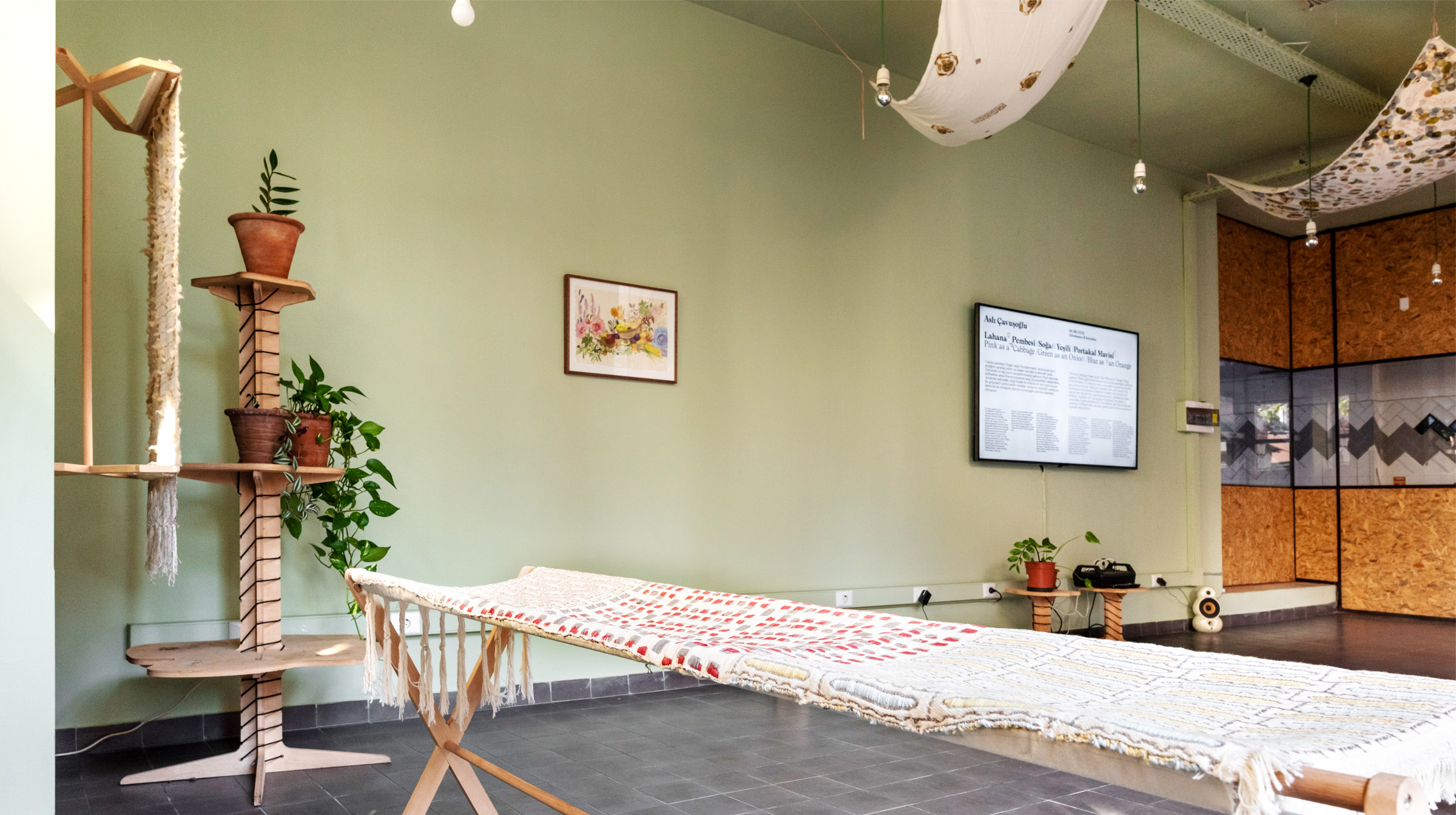
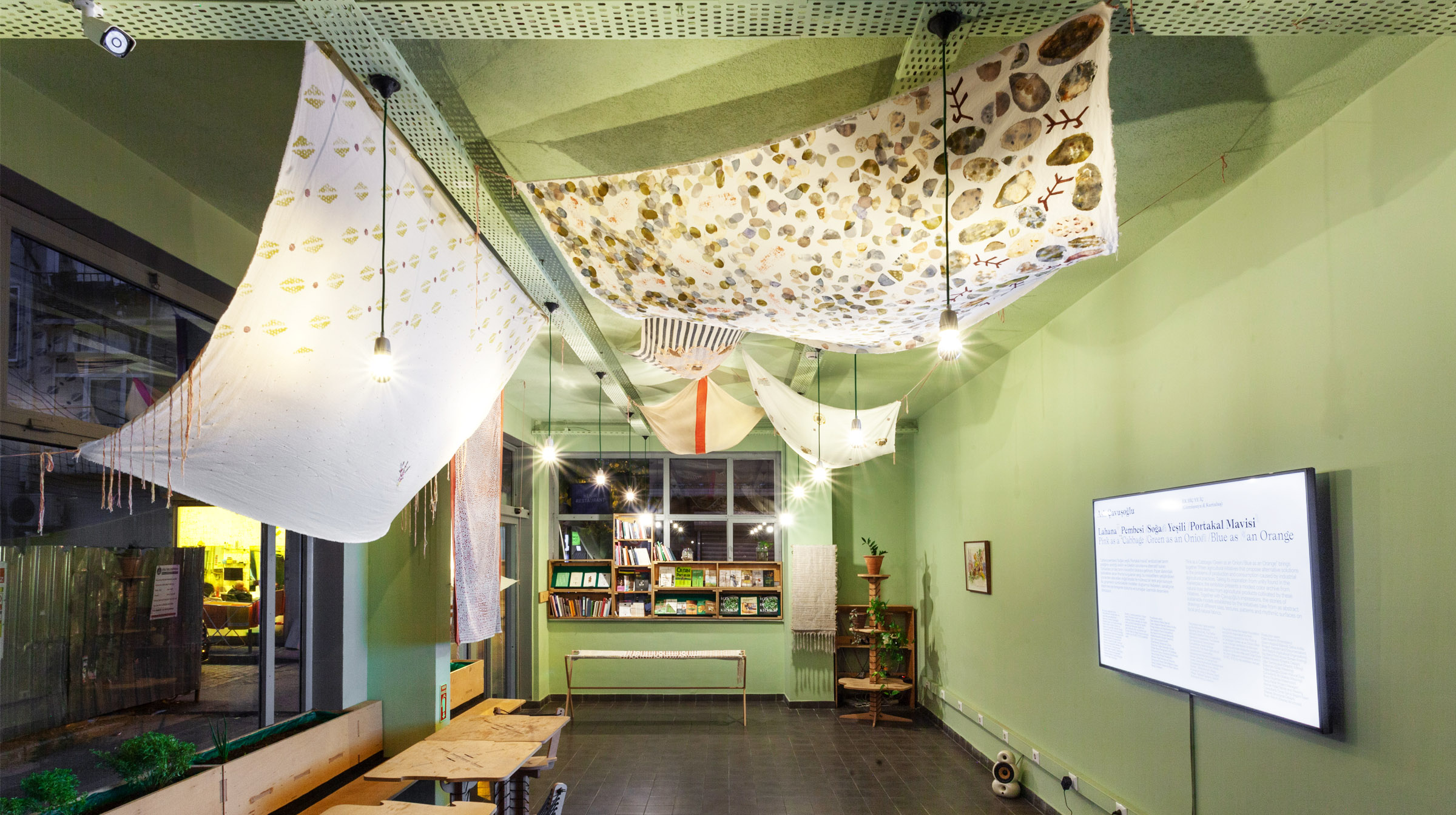







Aslı Çavuşoğlu
Pink as a Cabbage/Green as an Onion/Blue as an Orange
Site-specific installation
05.11.2021 – 22.01.2021
Location: EK BİÇ YE İÇ Taksim & Kurtuluş
Pink as a Cabbage / Green as an Onion / Blue as an Orange brings together fifteen agricultural initiatives that propose alternative solutions to the problems of production and consumption caused by industrial agricultural practices. Taking its inspiration from the sense of solidarity found in village markets, the exhibition presents a modest color archive of natural dyes derived from plants cultivated by these initiatives. Their desire to establish sustainable models woven together with Çavuşoğlu’s own impressions take form as abstract drawings of different sizes, patterns, and textures on natural fabrics.
This project was made possible by the following initiatives: Bayramiç Stone Mill, The Defne Women’s Initiative Production and Operation Cooperative, The Devrek Güneşi Agricultural Development Cooperative, Gediz Ecology Community, Hopa Agricultural Development Cooperative, Mesopotamia Women’s Cooperative, Mimas Collective, Ormanya Food Forest, Ovacık Agricultural Development Cooperative, Refikler Farm, Roma Bostan, Tahtacıörencik Village Ecological Living Collective, Vakıflı Village, Yedikule Bostan, Zeytinli Ecological Living Collective.
The artist thanks the Kadist Foundation and SAHA Association for their production support for the Pink as a Cabbage / Green as an Onion/ Blue as an Orange exhibition; to Borusan Logistics and İsak Antika for logistical support; to Emilie Villez and Özge Ersoy for their ideas and contributions; and to EK BİÇ YE İÇ for the exhibition venues. Production team: Diek Akdemir (Embroidery), Gizem Akgönül (Stencil), Defne Antika (Project Assistant and Documentation), Sevil Baştürk (Agricultural Organizations), Big Baboli Print House (Screen Printing), Maile Brientini (Graphic Design), Uğur Demirçubuk (Graphic Editing), Süleyman Gülas (Weaving), Tuğay İlyasoğlu Güven (Natural Dyes Consultant), Ali Odabaş, (Weaving), Burcu Özyılmaz (Watercolor), Yavuz Parlar (Project Management), Reyhan Polat (Textile and Weaving Consultant), Ömer Sarı & Begum Sayın (Display Structures Design, (İlhan Yıldırım (Display Structures).
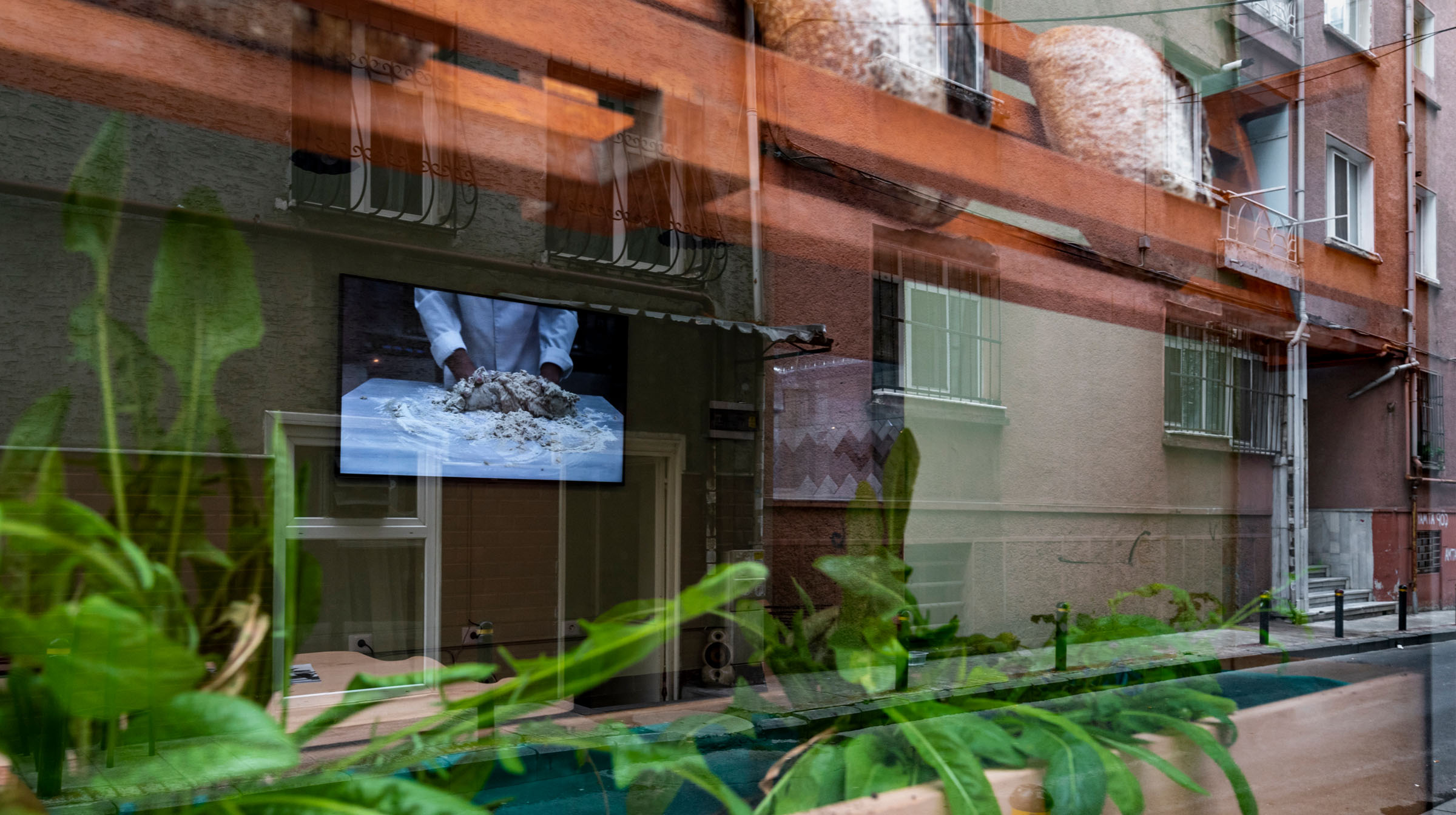
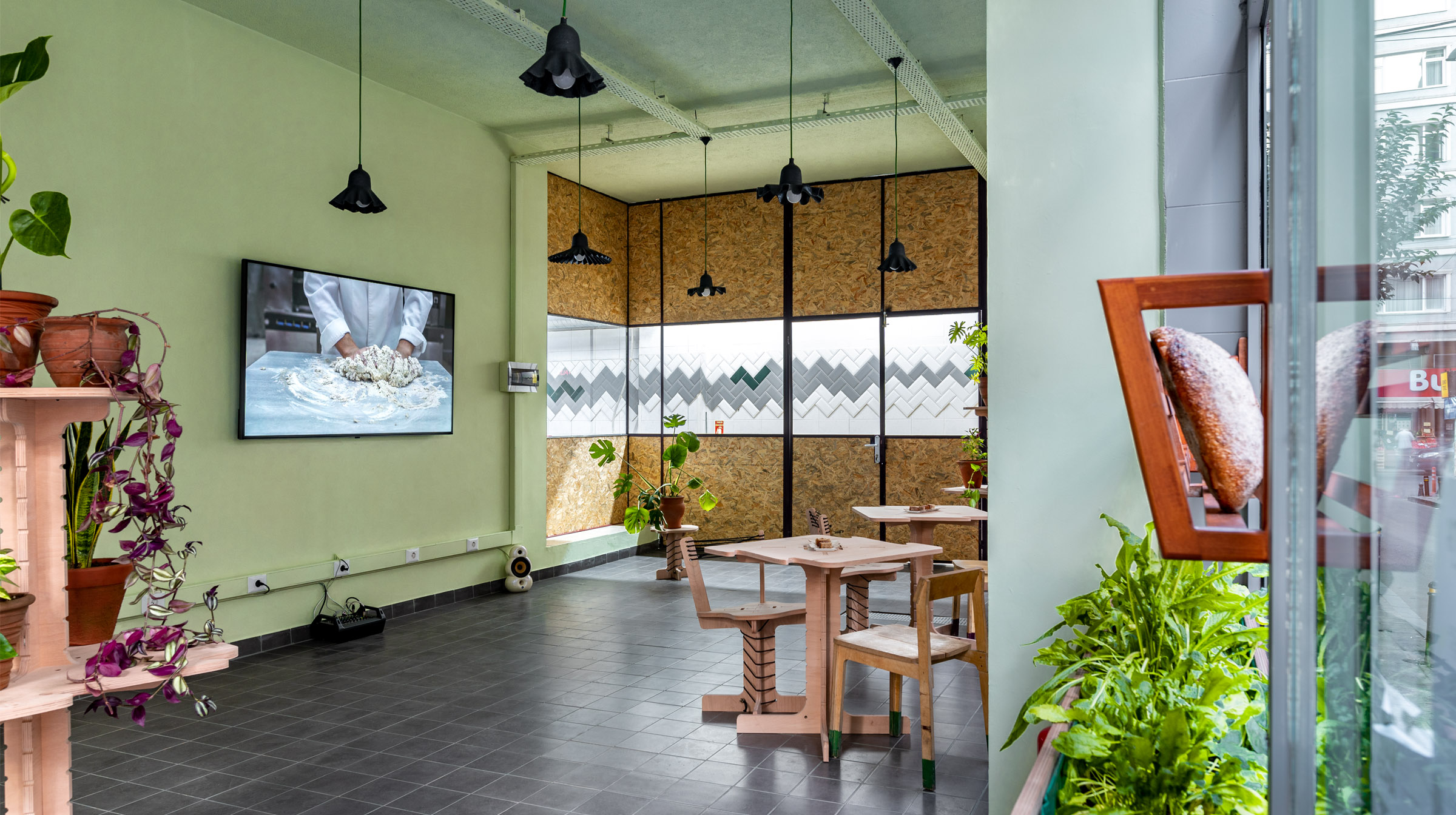
Burak Delier
Maya
Site-specific installation
2020
Location: EK BİÇ YE İÇ Kurtuluş
Protocinema presents A Few In Many Places, a group show which consists of five artist interventions in five cities, hyper-localized and globally interconnected. These artists: Abbas Akhavan in Montreal; Burak Delier in Istanbul; Michelle Lopez in Philadelphia; Stéphanie Saadé in Beirut; and Hasan Özgür Top in Berlin; each address inherited cycles of violence, the breaking of these cycles and rebuilding of ideally healthier systems.
The works commissioned for A Few In Many Places are interventions in a local shop or empty space in the artists’ neighborhoods that stays open in or out of quarantine, using low material consumption, and avoiding air travel or shipping. All of these works are linked by ProtoZine, with texts rolling out over the run of the show by: Fawz Fabra, Adam Kleinman, Asli Seven, Abhijan Toto and İpek Ulusoy Akgül.
Burak Delier’s intervention, Maya, 2020, can be visited at EK BİÇ YE İÇ Kurtuluş. The artist set up shop in this former bread factory to cultivate bread yeast by way of voice, sound and light/videos that reflect the history of the region, and then to bake and share his bread. Yeast inherently has memory that traditionally, before the modernization of food, goes back many generations, and carries with it its own stories and traumas, which work as a metaphor for corrosive lineages in other aspects of civic life.
Press about the exhibition:
